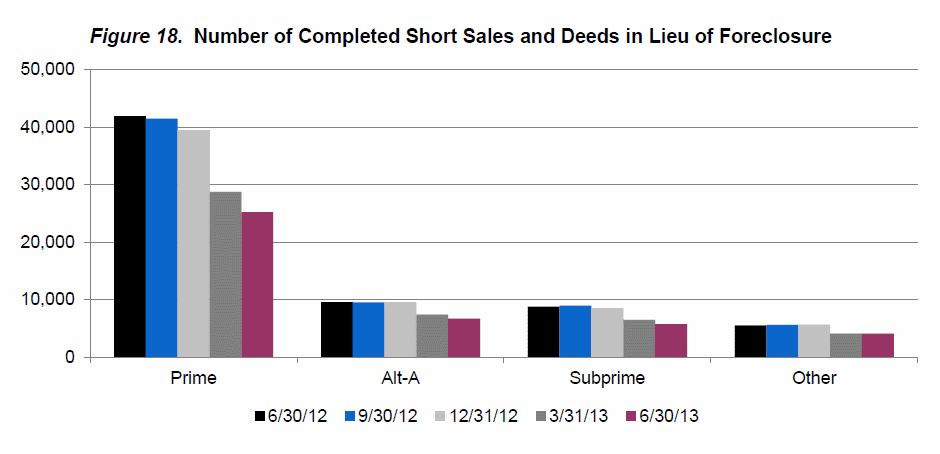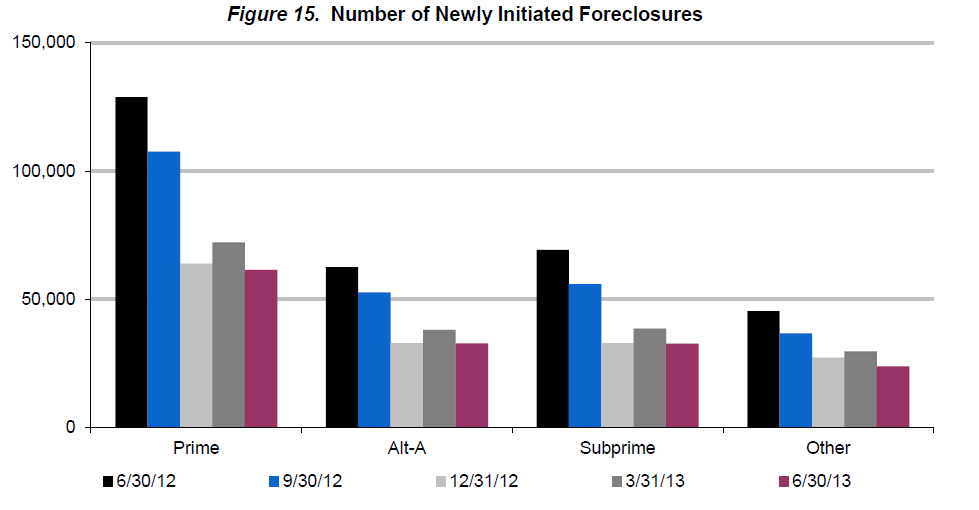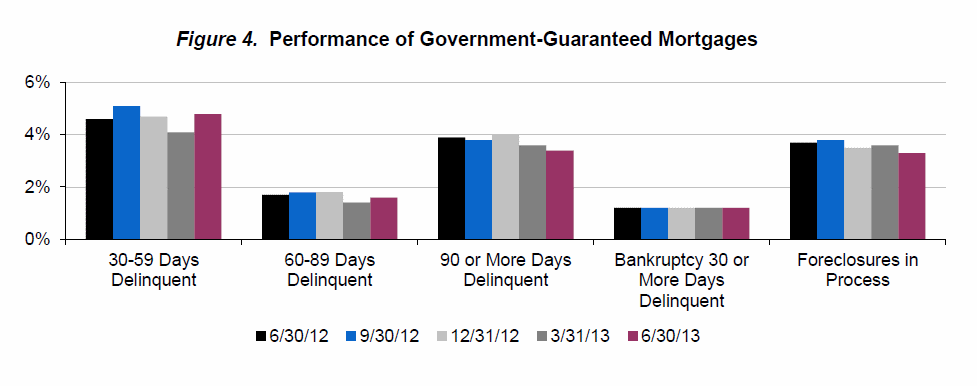Foreclosure starts in the second quarter of 2013 were down to half the level of a year earlier the Office of Comptroller of the Currency (OCC) said on Thursday. There were 150,592 new foreclosures initiated during the quarter, down 50.8 percent from the second quarter of 2012 and the fewest in any quarter since early 2008.

OCC noted significant improvements in most but not all measures of delinquency in its second quarter Mortgage Metrics Report. The report provides performance data on first-lien residential mortgages that represent 52 percent of all those outstanding in the U.S; approximately 26.5 million loans with $4.5 trillion in unpaid principal balances.
Strengthening economic conditions, aggressive foreclosure prevention assistance, regulatory actions, and home forfeitures contributed to the improved performance, OCC said. The metrics also improved due to servicing transfers from the selected national banks and one federal savings association included in the report. The number of loans covered in the report has decreased 13.0 percent from a year ago and 23.3 percent from the end of the second quarter in 2008. Principal balances are down 13.7 percent and 26.8 percent for the two periods. In addition to transfers the decline in the portfolio also resulted from the reduction of mortgage debt overall.
At the end of the quarter 90.6 percent of all mortgages covered in the report were current and performing compared to 90.2 percent at the end of the first quarter and 88.7 percent a year earlier. The 30+ day delinquency rate was 2.9 percent, 11.6 percent higher than the previous quarter and 1.8 percent above the rate a year earlier. Delinquencies of 60 days or more decreased to 3.8 percent from 4.0 percent the previous quarter and 4.4 percent the prior year.
Foreclosure activity overall reached the lowest level since OCC initiated its report in the first quarter of 2008. In addition to the drop in starts, the number of loans in the process of foreclosure at the end of the quarter declined 39.8 percent from the previous year to 744,369 loans. The number of completed foreclosures fell 22.2 percent year-over-year to 79,960.

Performance of government guaranteed mortgages, which comprised 24.6 percent of the serviced portfolio, did not improve in the second quarter but did better than a year earlier. Current and performing loans represented 85.7 percent of the guaranteed portfolio compared to 86.2 in Q1 and 84.9 percent in the second quarter of 2012. Seriously delinquent mortgages in this part of the portfolio increased 0.5 percent from the previous quarter to 6.2 percent.

Just over 57 percent of the portfolio were loans serviced for Fannie Mae and Freddie Mac. Current and performing loans were 95.1 percent of that portfolio, compared to 94.6 percent in the first quarter and 93.7 percent a year earlier.
Servicers implemented more than twice as many home retention actions during the quarter as home forfeiture actions. There were 314,672 loan modifications, trial-period plans, and shorter term payment plans put in place during the quarter compared to 121,746 completed foreclosures, short sales, and deeds-in-lieu. Still the foreclosure prevention activities were down 9.8 percent from the first quarter and 25.2 percent from a year earlier.
Loan modifications completed in each of the last five quarters have performed similarly over time even though factors that can influence their performance such as the average change in monthly payment, the characteristics and geographic location of the loans and the addition or deletion of modifications programs among reporting institutions have varied.
Among modifications completed in each of the last five quarters, 60 day delinquencies occurred at the following rate: Three months after modification, between 5.8 and 7.7 percent; after six months, 11.5 to 14.2 percent; at 12 months, 16.9 to 20.9 percent. Among modifications completed during the last five quarters, less than 16 percent were 90 or more days delinquent 12 months after modification. Loans modified in the most recent four quarters appear to be re-defaulting at materially lower rates than modifications completed in earlier quarters.
HAMP modifications have performed better than other modifications implemented during the same periods perhaps because of HAMP's emphasis on the affordability of monthly payments relative to the borrower's income, verification of income, and completion of a successful trial-payment period. While these criteria result in better performance of HAMP modifications over time, the greater flexibility allowed through other types of modifications results in more of those modifications for borrowers who do not qualify for HAMP.







